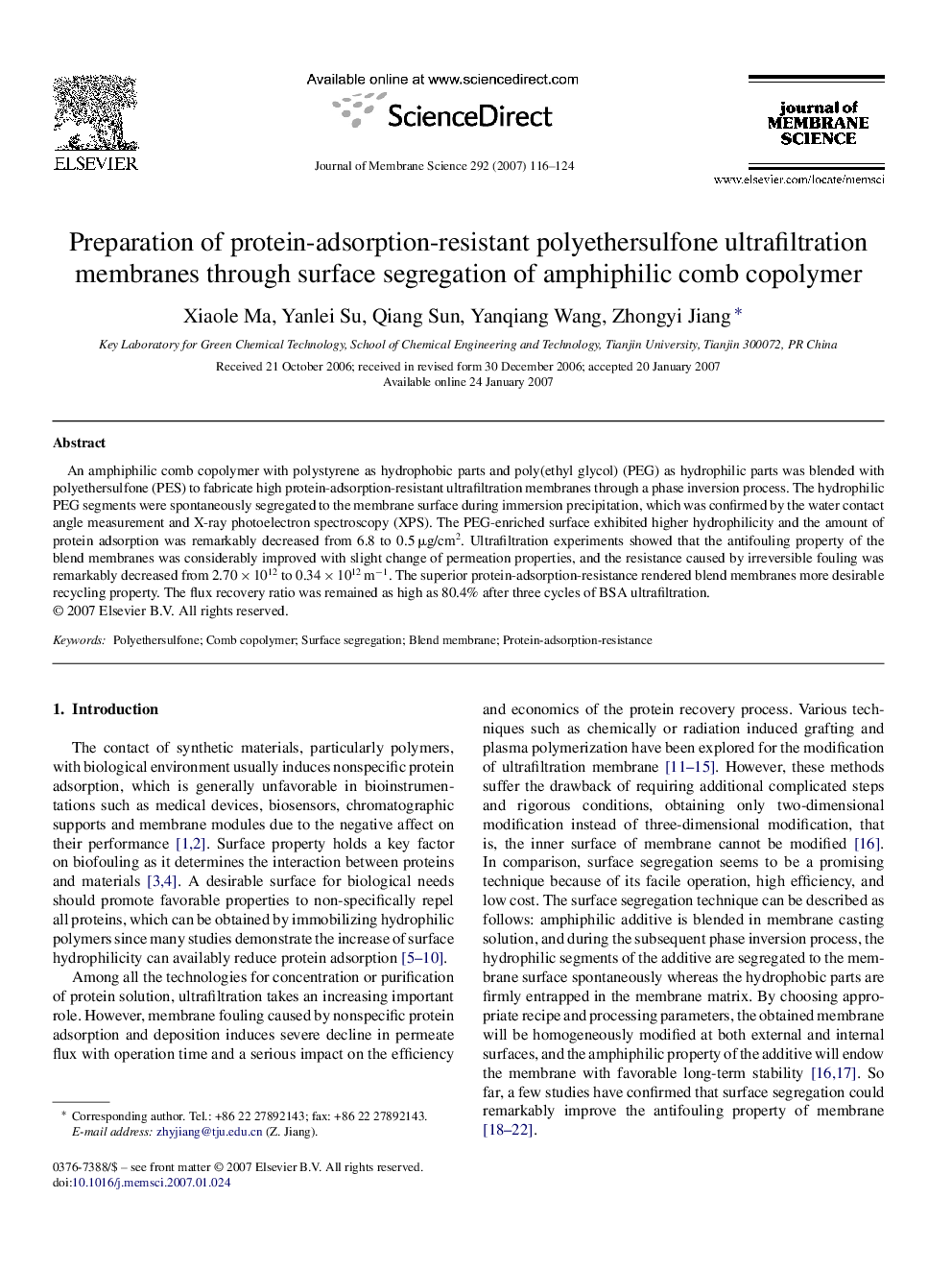| Article ID | Journal | Published Year | Pages | File Type |
|---|---|---|---|---|
| 638722 | Journal of Membrane Science | 2007 | 9 Pages |
An amphiphilic comb copolymer with polystyrene as hydrophobic parts and poly(ethyl glycol) (PEG) as hydrophilic parts was blended with polyethersulfone (PES) to fabricate high protein-adsorption-resistant ultrafiltration membranes through a phase inversion process. The hydrophilic PEG segments were spontaneously segregated to the membrane surface during immersion precipitation, which was confirmed by the water contact angle measurement and X-ray photoelectron spectroscopy (XPS). The PEG-enriched surface exhibited higher hydrophilicity and the amount of protein adsorption was remarkably decreased from 6.8 to 0.5 μg/cm2. Ultrafiltration experiments showed that the antifouling property of the blend membranes was considerably improved with slight change of permeation properties, and the resistance caused by irreversible fouling was remarkably decreased from 2.70 × 1012 to 0.34 × 1012 m−1. The superior protein-adsorption-resistance rendered blend membranes more desirable recycling property. The flux recovery ratio was remained as high as 80.4% after three cycles of BSA ultrafiltration.
